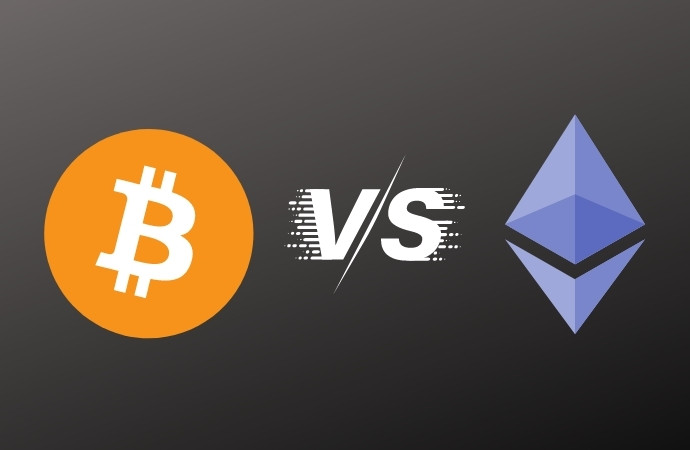Cryptocurrencies are undoubtedly the hottest topic in finance and investing right now, and for a good reason. These are not simply “digital currencies”; they are digital assets that behave unlike anything we have encountered before. The philosophy of what these digital assets could be in the future is far beyond what this article will attempt to explain.
In order to grasp an understanding of this emerging asset class, it is vital to break things down a bit. Let us take a look at the top two cryptocurrencies on the market: Bitcoin and Ethereum.
How It All Started
Bitcoin spawned the birth of cryptocurrencies. Though there were a few attempts at creating a digital currency as far back as the 1980s, Bitcoin was the first truly decentralized peer-to-peer electronic payment network to gain large-scale adoption. Developed by an anonymous character or group under the name Satoshi Nakamoto, Bitcoin emerged as a reaction to the corruption of central banking after the 2008 financial crisis. The mission was to create a decentralized network to ensure that no single authority has the power to manipulate the currency’s supply or issuance.
Ethereum was developed in 2015 by Vitalik Buterin, a Bitcoin developer who saw Bitcoin as limited in its development and scalability. Buterin envisioned a blockchain with a broader use case than just money. He sought out to develop an open-source smart contract, blockchain protocol that could host decentralized applications (DApps).
Difference Between Bitcoin and Ethereum
It is important to note that a side-by-side comparison of these assets is challenging as these behave very differently. It is not like comparing the U.S. dollar and the Euro.
Bitcoin strives to be the strongest, most sound money ever to exist and an alternative to government-issued currencies. The network focuses on incorruptibility to create a fair monetary system that any centralized force cannot control. One of the strongest cases for Bitcoin is the fact that it has a fixed supply. There will only ever be 21 million bitcoins. Bitcoin often is referred to as “digital gold” for this reason. This aspect creates ultimate scarcity and is why people and institutions are “gold rushing” into the asset.
Ethereum aims to be a decentralized platform where anyone can build smart contracts and applications on top of the network. Many view Bitcoin as being slow and reluctant to change, and therefore Ethereum was created to be “money 2.0” for the information age and often described as “ultra-sound money.”
Ethereum is still going through major developmental changes. Currently, the network is transitioning from a proof of work to a proof of stake system (Ethereum 2.0 upgrade). The tradeoff is that it will not be dependent on mining, but rather the network is to be secured by holders locking up and staking their ether (Ethereum’s currency). Though this uses significantly less energy than proof of work, it inherently causes the network to be more centralized, giving more power to those who hold more ether.
With the amount of development still going on with Ethereum, one could view this as bullish or bearish. On the one hand, it could develop into a technology that is the base layer of our entire financial system. On the other, it could be increasing its surface area of failure and attack by adding too much complexity. Ethereum is likely to continue to go through many changes in the short term.
Applications, Features, and Secondary-Layers

Solutions are developing to address Bitcoin’s speed and cost, such as secondary layers like the Lightning Network. The base layer must be ironclad to keep Bitcoin incorruptible. The Lightning Network serves as a transaction settlement layer. Similar to the Visa network, the Lightning Network channels several transactions and settles them periodically on-chain, lowering cost and instantly settling payment for the user. But unlike the Visa network, Lightning is open-source and decentralized.
Bitcoin is generally bought and held as a store of value, while Ethereum DApps are creatively played with to increase yield or solidify real-world assets on the blockchain. Decentralized finance (DeFi) are financial services built on top of the network. Non-fungible tokens (NFTs) make it possible to solidify real-world assets such as art or collectibles on the blockchain. The vast majority of this action is happening over the Ethereum network.
With all of the interest and flood of money rushing into the digital asset space, naturally, there is lots of competition. Though most DeFi and NFT projects currently exist on Ethereum, other blockchains are gaining ground by offering significantly lower transaction fees at quicker speeds. This development is also happening as secondary layers on Bitcoin but at a much slower pace. It is important to note that many of these competing blockchains can achieve “improvement” by sacrificing a bit of decentralization on the base layer. In general, to achieve faster and cheaper transactions, the protocol will inherently become more centralized.
Will Ethereum Overtake Bitcoin?
It may seem apparent that faster-moving tech will outcompete those slow to change. Due to Bitcoin’s slow innovation, many people think that Ethereum will one day take over as the dominant internet native currency (The Flippening). Though this idea may make sense for innovation within companies, one must remember that these networks are not stocks. These are digital assets distributing value over peer-to-peer networks without third-party intervention, much closer to money for the digital age or “magic internet money.” It is likely that whatever will stand the test of time will depend on its robustness. In the short term, with some creativity, one might extract an incredible amount of value on the Ethereum network, but it may be best to take those profits earned and hold them in Bitcoin for the long term as it is the more de-risked savings technology.
Is Bitcoin Overvalued?
The short answer, unlikely. If Bitcoin achieves what it’s set out to, it will likely take over the gold market and possibly continue to absorb other traditional asset space as well. Gold currently sits around a $10 trillion market cap. At its most recent high, Bitcoin was around $1 trillion, which puts it around only 10% of gold. If Bitcoin overtakes the gold market altogether, it will sit at around $500,000 per coin.
They say that all models are wrong, but some are useful. Plan B‘s Stock-to-Flow Model historically has charted Bitcoin’s price quite accurately. Stock-to-flow ratios evaluate the current available stock of a commodity against the flow of new production. For Bitcoin, this model would suggest that Bitcoin is currently undervalued.
Conclusion
There is a lot of noise happening in cryptocurrencies. It will take some time to understand the true implications of these digital assets. One thing to be sure of is that decentralized networks will continue to develop and be adopted. The only wrong choice might be to ignore this emerging space entirely.



